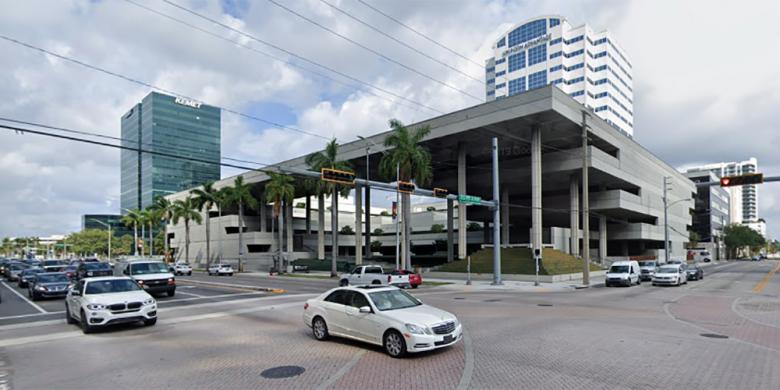Another Classical Mandate
John Hill
21. August 2020
The existing Federal Courthouse in Fort Lauderdale was designed by architect William Morgan and completed in 1979. (Photo: Google Street View)
Six months after news leaked of a draft executive order by the Trump administration to mandate classical architecture for federal buildings, a contract opportunity for a new courthouse in Florida embeds that same mandate, drawing the ire of the AIA.
The proposed executive order making the rounds in February, "Making Federal Buildings Beautiful Again," said that "the classical architectural style shall be the preferred and default style." Even though it was never put on Donald Trump's desk to sign, the August 10th contract opportunity from the General Services Administration (GSA) for a "New Ft Lauderdale Federal Courthouse Bridging Architect" circumvents any executive action toward the same ends.
The description for the contract says, "Classical architectural style shall be the preferred and default style absent special extenuating factors necessitating another style." Furthermore, one of the submission requirements is a statement of "Philosophy and Design Intent" that should address "parameters that may apply in creating a federal courthouse in a classical architectural style and any particular challenges of designing such a facility in South Florida."
The contract opportunity was updated on August 17 to include responses to questions. One of them was related to the call for classical architecture:
Answer: As stated, Classical architectural is the preferred style. GSA acknowledges the challenges associated with a classical architectural style in South Florida which may necessitate another style esthetic that follows the classical philosophy, while maintaining the dignity of the Judiciary and Federal Government.
In response to the embedding of the draft executive order's mandate for classical architecture in the search for an architect for a Florida courthouse, the American Institute of Architects (AIA) condemned the action in a statement on August 20. AIA EVP/Chief Executive Officer Robert Ivy, FAIA, said in the statement:
"We reject the principle of any pre-ordained styles mandated for GSA projects. Instead, the AIA emphatically supports the peer-reviewed Design Excellence Program, which has raised the quality of federal design in communities throughout the United States, with projects tailored to the people, the places, and the times we live in."
The words echoed those the AIA levied at the Trump administration in February, sentiments that were shared by most architecture critics and vocal proponents of modern and contemporary architecture.
Last month, the House of Representatives introduced a bill that would nullify the proposed executive order. The "Democracy in Design Act" would require that the GSA "adheres to the principles of the report titled Guiding Principles for Federal Architecture," referring to the report that "was issued by the Ad Hoc Committee on Federal Office Space on June 1, 1962, and serves as the policy directive for the GSA's Design Excellence Program within its Public Buildings Service." This is the same program mentioned by Ivy.
The Guiding Principles of Federal Architecture, which "prescribes against the development of an official architectural style for government buildings and encourages the government to avoid excessive uniformity in building design," is clearly the target of the draft executive order and the shifting of its principles to specific projects, in this case a federal courthouse in Fort Lauderdale.
It should be noted that the existing federal courthouse in Fort Lauderdale, designed by William Morgan and completed in 1979, is strikingly modern — Brutalist even— with stepped floor plates, a roof extension on pilotis, and an open corner linked to a central courtyard. The draft order, no doubt written by Trump appointee and National Civic Art Society president Justin Shubow, singled out Brutalism, stating that buildings "influenced by Brutalism and Deconstructivism" have "little aesthetic appeal."
Regardless if the classical mandate in the search for an architect in Fort Lauderdale remains or if the AIA is successful in its rejection of the language, the 1979 courthouse will most likely be demolished. Although the site for the new courthouse has not been determined yet, in March 2018 "federal funding was allocated to demolish and replace the Courthouse as part of a larger, downtown project for Fort Lauderdale," according to the Florida Trust for Historic Preservation, which put the courthouse on its "11 to Save" list that year.
Related articles
-
Another Classical Mandate
on 8/21/20
